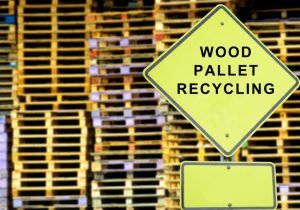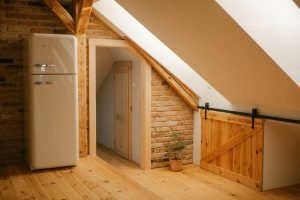Last Updated on April 4, 2024 by teamobn
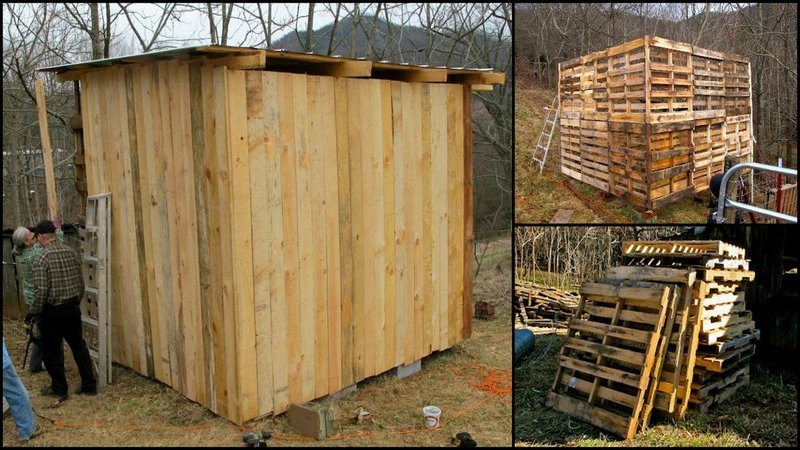
Why not make a goat pallet barn when in need of an animal shelter or storage in your yard? If you want to keep it simple, using pallets for your goat barn is way cheaper than other materials.
Pallets are an inexpensive and easy-to-find material, so this project is perfect for anyone who wants to save some money. Plus, it’s a great way to upcycle and recycle materials that would otherwise be thrown away.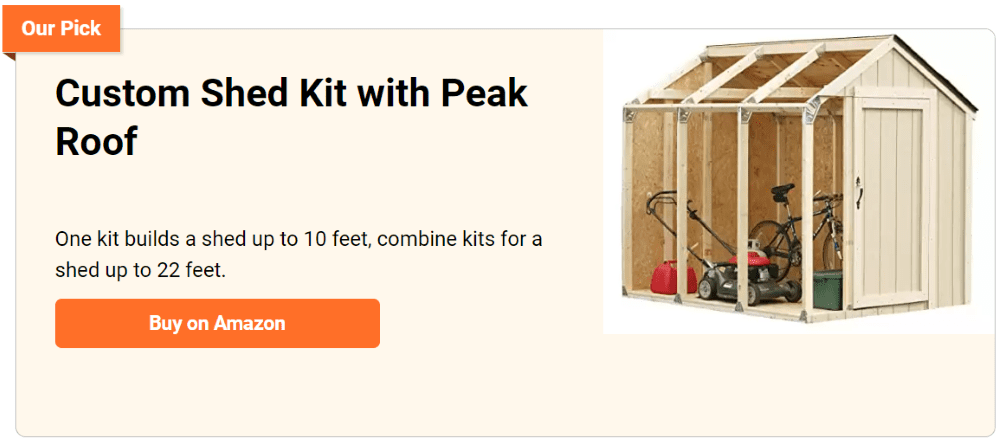
You can use pallets in the garden, your backyard, the front lawn, and inside your house. You can also use them in the garage, the shed, or anywhere else you need a little extra storage space.
They will last for years as long as you keep them off the ground. With a little bit of creativity, you can even turn them into goat pallet barns. 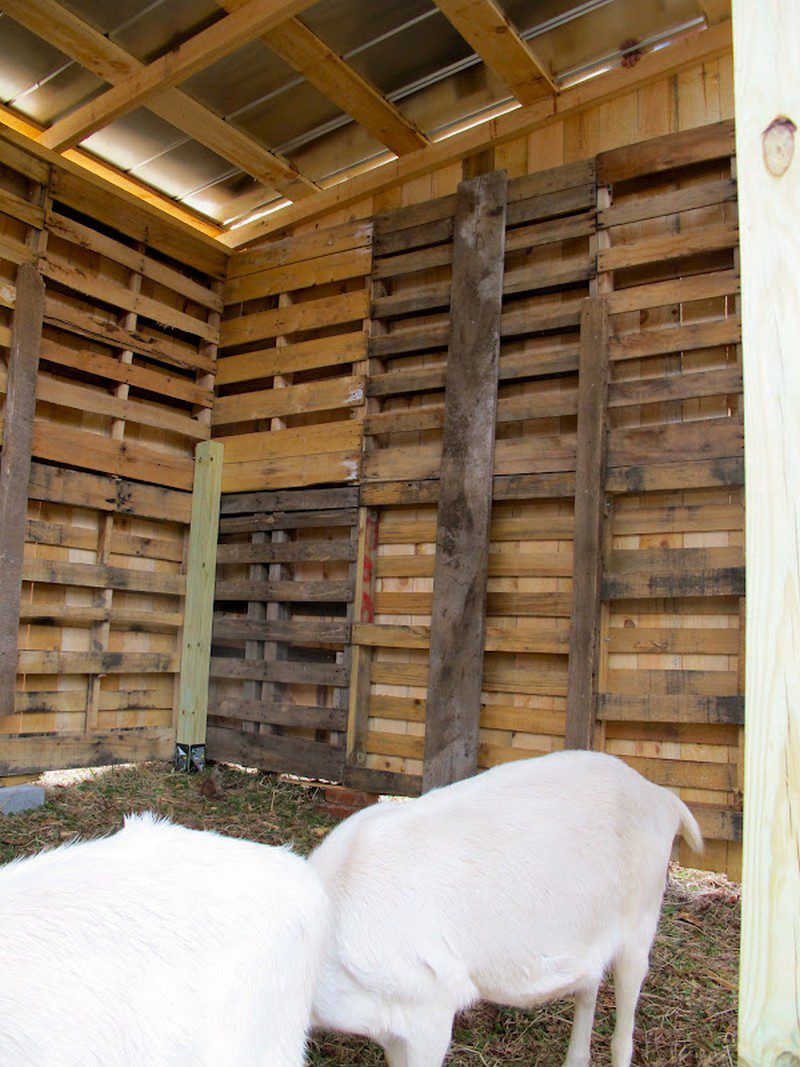
A goat pallet barn is an excellent way to provide your goats with shelter from the elements and protect them from predators.
They are easy to build and relatively inexpensive, and they can be customized to fit your specific needs. If you have the time and the inclination, building a goat pallet barn can be a fun and rewarding project. 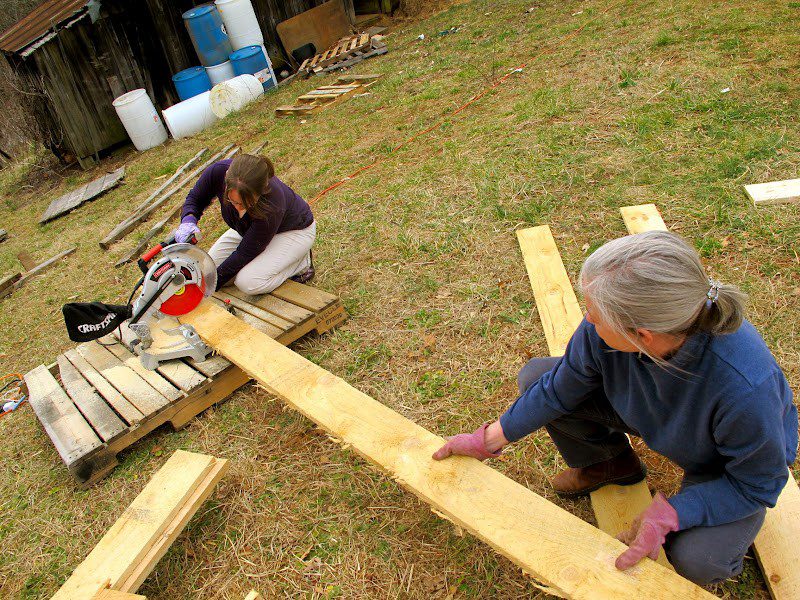
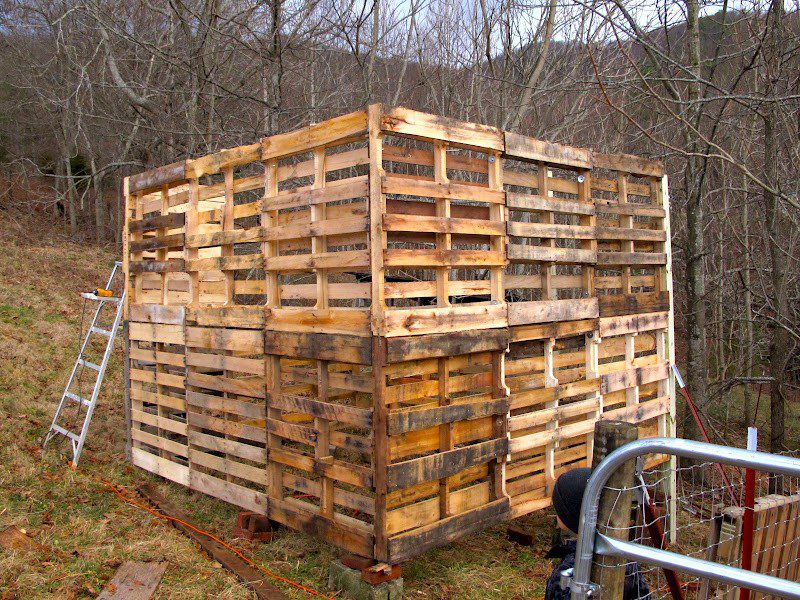
Bury the bottom of the barn into the ground. This will help to keep the barn from being blown away by strong winds.
You may want to consider adding some type of flooring to your goat pallet barn, especially if you are planning on keeping your goats inside for extended periods of time.
One easy and affordable option is to use concrete pavers. Simply lay the pavers down in your desired configuration and then secure them together with some type of adhesive.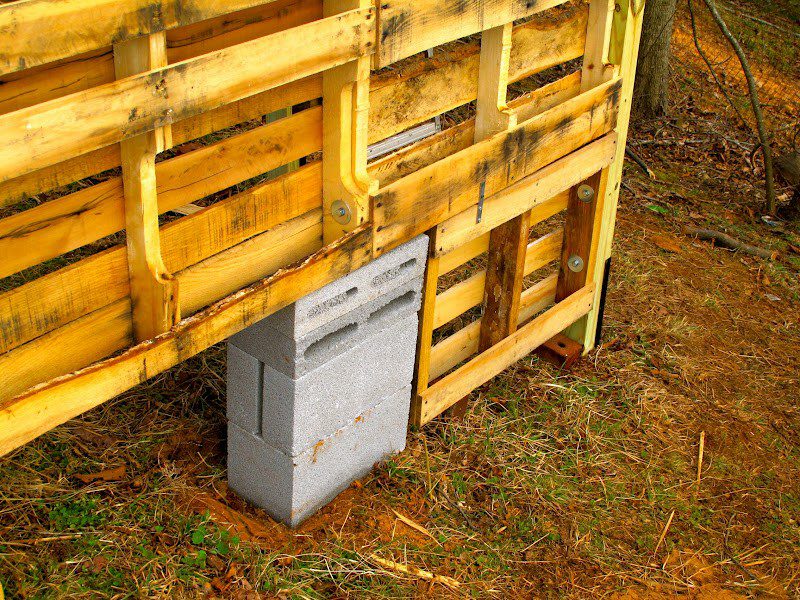
Another way to make your barn more comfortable for your goats is to add insulation. This will help to keep the barn cooler in the summer and warmer in the winter.
If you have a lot of goats, or if your goats are large, you may want to consider adding a ramp or stairs to your barn. This will make it easier for your goats to get in and out of your barn and will help to prevent them from getting stuck.
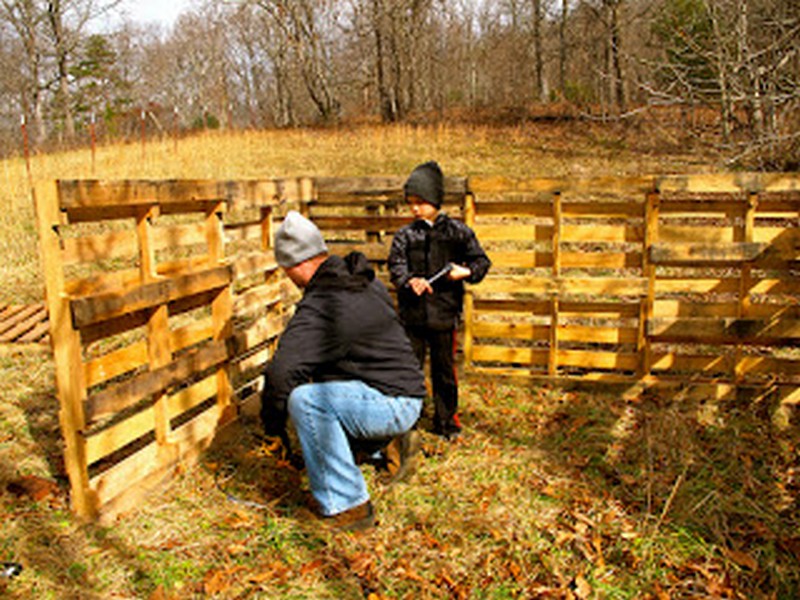
For the roofing of your goat pallet barn, you may use any materials you want for your goat barn, but be sure that they are light in weight.
Wood, metal, plastic, or a mixture of any of these would be acceptable. You can use corrugated metal, sheet metal, tin roofing, roofing shingles, cedar shakes, or tile.
Building a Goat Pallet Barn
Materials
- Old pallets
- Stakes
- Lag bolts
- Tin Roofing
- Concrete blocks
Tools
- Clamps
- Drill
- Circular Saw
Instruction
Step 1: Planning and Design
- Determine the size of the barn based on your goat population and available space.
- Sketch a simple design, including dimensions for length, width, and height.
Step 2: Collecting Pallets
- Source old pallets from local businesses or online marketplaces. You’ll need a sufficient number to match your barn’s dimensions.
- Inspect each pallet. They should be sturdy and free from damage.
Step 3: Preparing the Site
- Choose a level spot for your barn. It should be well-drained and accessible.
- Clear the area of debris and vegetation.
- Lay out the first row of concrete blocks. They will serve as the foundation, keeping the pallets off the ground and preventing rot.
Step 4: Assembling the Base
- Position the first layer of pallets on the concrete blocks. Use clamps to hold adjacent pallets together.
- Drill holes through the meeting points of the pallets.
- Secure the pallets together with lag bolts.
Step 5: Building Walls
- Stack additional layers of pallets on top of the base layer. Secure each new layer with clamps, drill, and lag bolts.
- For added stability, drive stakes into the ground at the corners. Bolt these stakes to the pallets.
- Cut out a doorway with the circular saw. Ensure it’s wide enough for your goats.
Step 6: Flooring
- If desired, lay concrete pavers inside the barn for flooring. They provide a solid, easy-to-clean surface.
Step 7: Roofing
- Construct a simple roof frame from additional pallets or wooden beams.
- Attach the tin roofing to the frame with screws. Ensure it overlaps to prevent leaks.
- Secure the roofing to the walls. Make sure it extends over the edges to provide shelter from rain.
Step 8: Finishing Touches
- Check for any sharp edges or protruding nails. Remove or hammer them down for safety.
- Consider adding insulation or internal dividers if necessary.
Click on any image to start the lightbox display. Use your Esc key to close the lightbox. You can also view the images as a slideshow if you prefer 😎
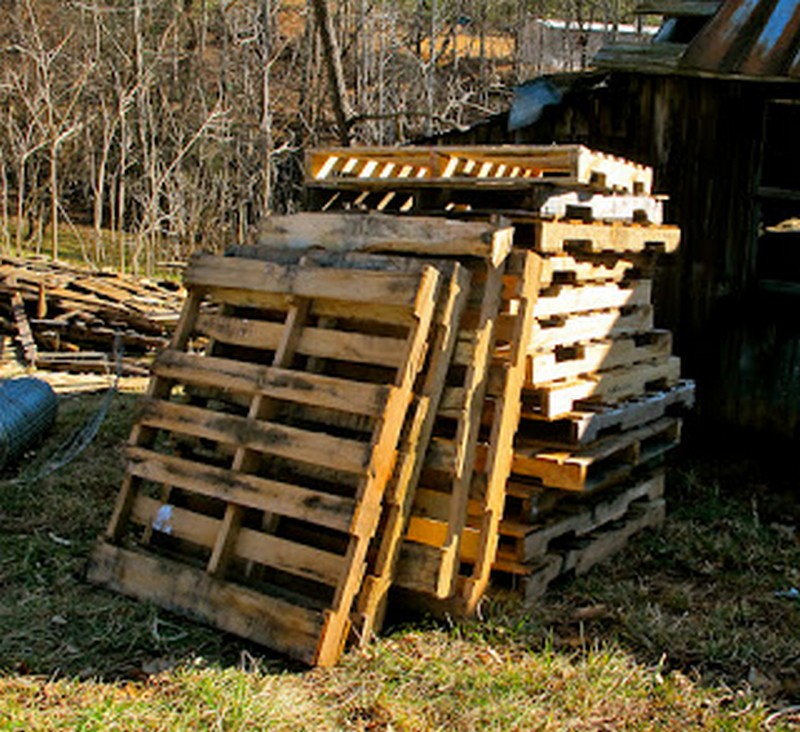

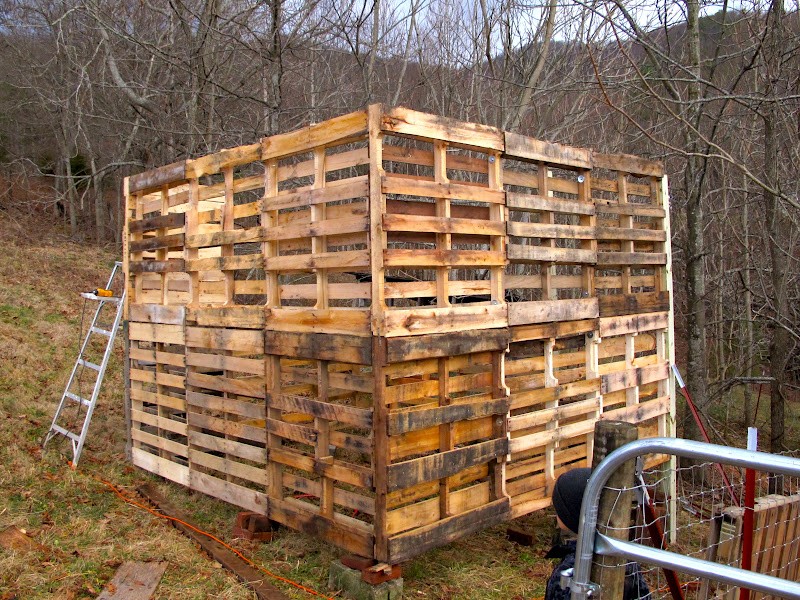
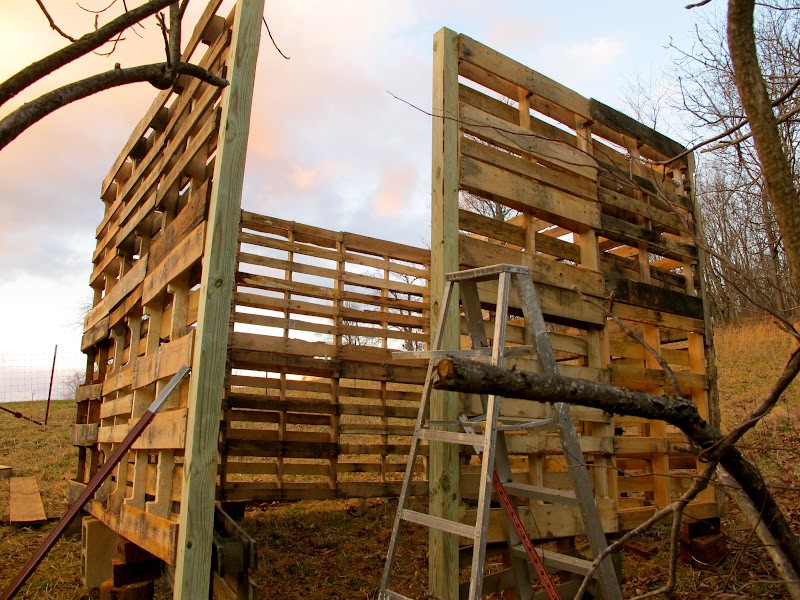

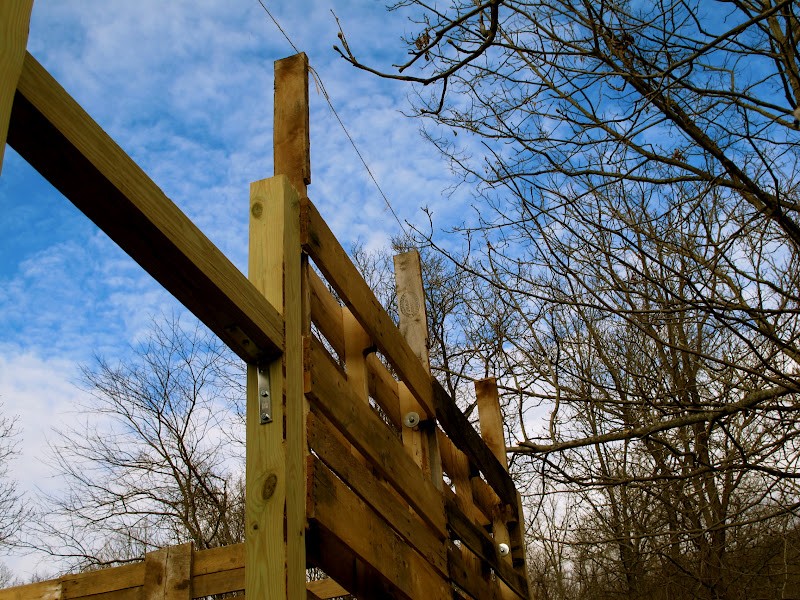
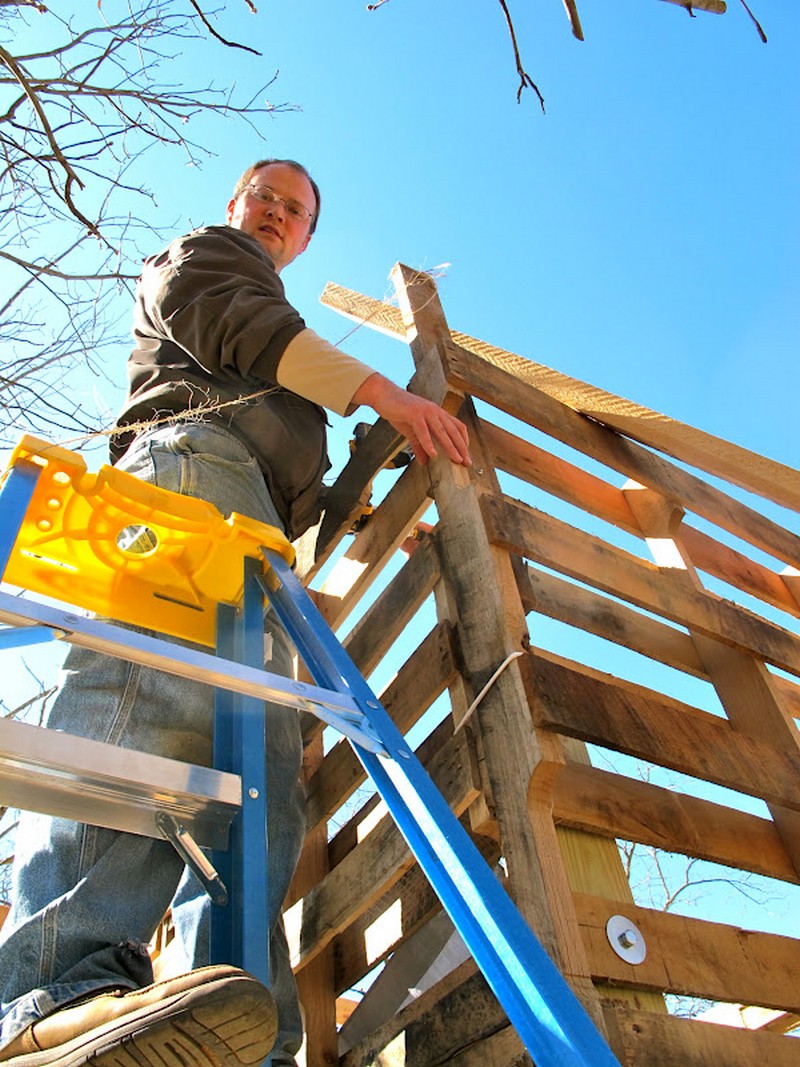
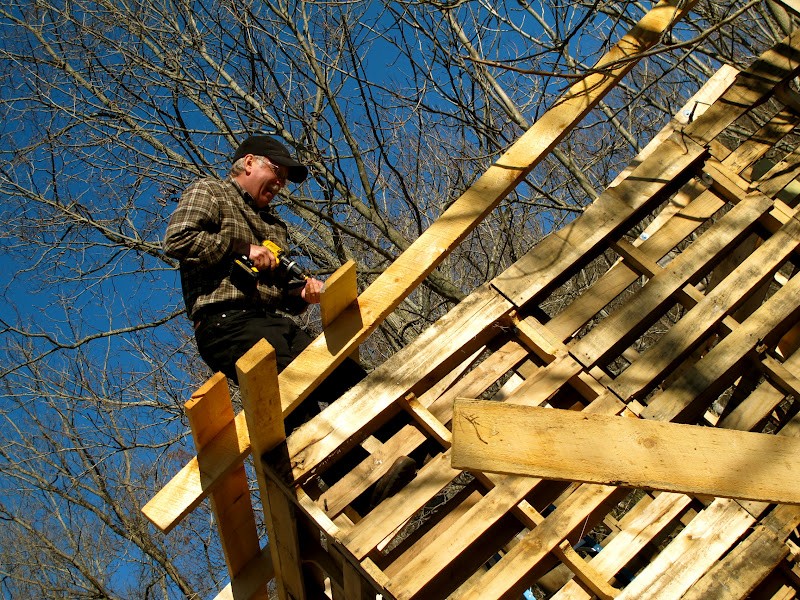

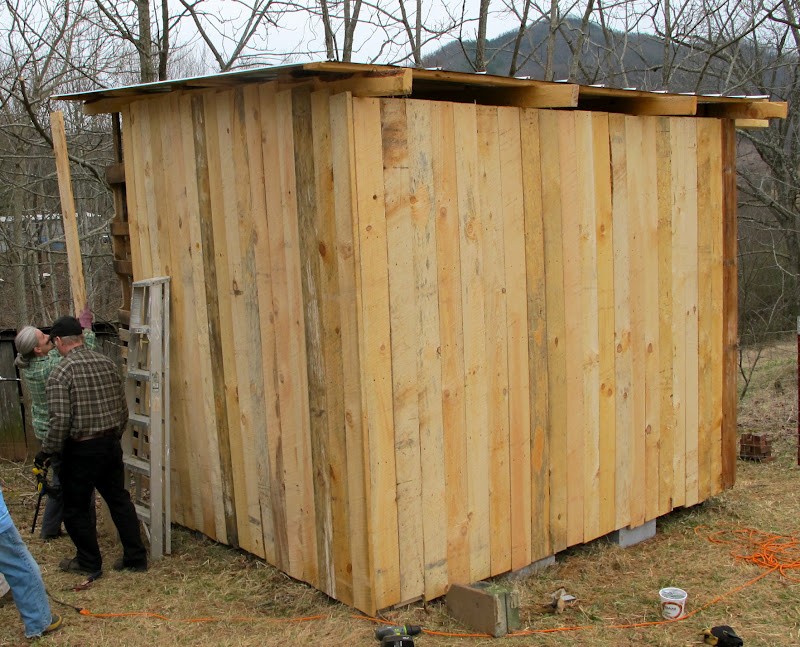
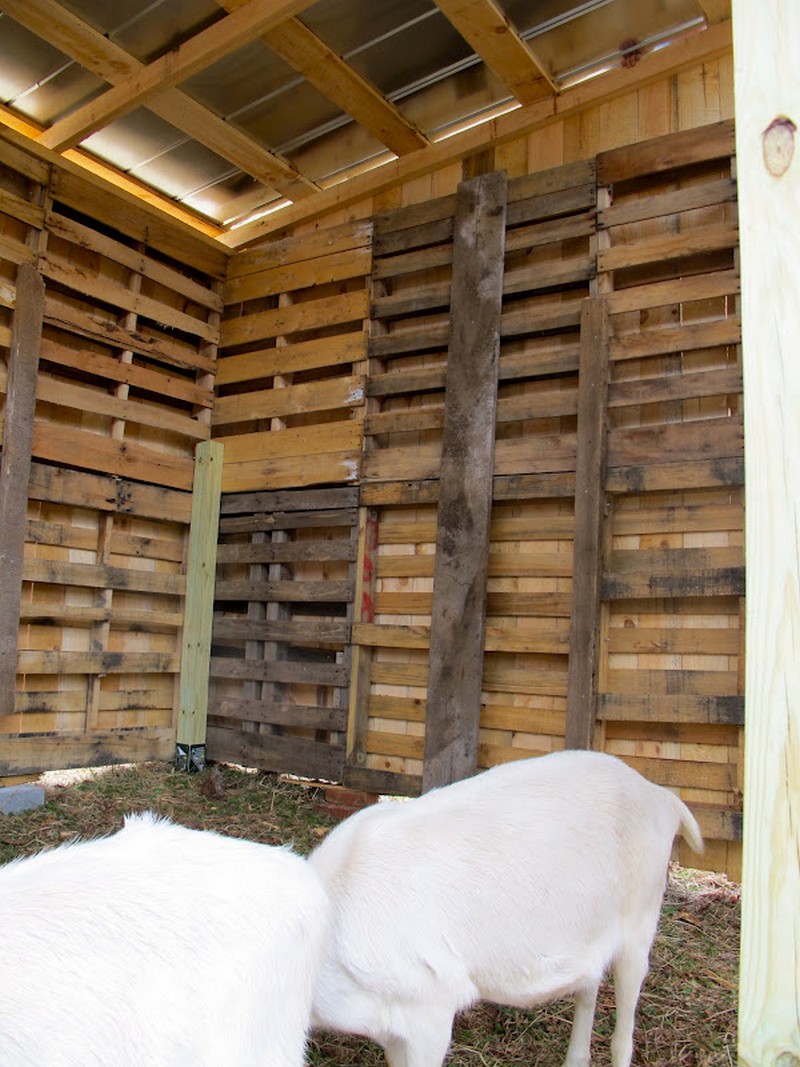
Adding Storage and Feeding Areas
A well-designed goat pallet barn maximizes the comfort and safety of your goats. Adding dedicated storage and feeding areas to your barn ensures that all your goat care supplies are neatly stored and that your goats have easy access to their feed, promoting a healthy and orderly environment.
Creating Storage Areas
- Strategic Placement: Choose a corner or side of the goat pallet barn for storage to keep it separate from the goats’ living space. This helps in maintaining cleanliness and organization.
- Shelving and Cabinets: Utilize the vertical space by installing shelves or cabinets made from pallets against the barn walls. This can be an excellent place to store feed, grooming tools, and veterinary supplies.
- Pallet Storage Bins: Construct storage bins from spare pallets for bulky items like bedding material or feed bags. Customize the size of the bins based on your storage needs, ensuring they’re easily accessible.
- Secured Storage: For items that need to be kept secure, such as medications or specialized feed, consider adding a lockable cabinet or closet within the barn. This keeps sensitive items out of reach but within easy access when needed.
Designing Feeding Areas
- Feeder Placement: Position feeders along the walls of the goat pallet barn to allow ample space for goats to eat without crowding. Ensure the feeders are accessible without obstructing pathways.
- Pallet Feeders: Build durable feeders from pallet wood that can be attached to the barn walls. These can be designed to hold hay, grain, or mineral supplements, depending on your goats’ dietary needs.
- Water Stations: Set up water stations near the feeding area. If possible, install automatic waterers to ensure a constant supply of fresh water. Make sure the water stations are easy to clean and refill.
- Mineral Stations: Goats require access to minerals for their health. Install a small pallet-made box or shelf in the feeding area dedicated to mineral blocks or loose minerals.
Adding well-thought-out storage and feeding areas to your goat pallet barn enhances the functionality and efficiency of your barn. It ensures that supplies are organized and that your goats have easy access to their feed and water, contributing to a well-managed and healthy goat barn. With creativity and effort, your goat pallet barn can cater to all your goats’ needs while keeping your supplies in perfect order.
Safety Features and Predator Protection
A goat pallet barn, by its nature, is an eco-friendly and cost-effective shelter for goats. However, it could leave your goats vulnerable without proper safety features and protection against predators. By integrating thoughtful design elements and protective measures, you can create a safe haven for your goats that guards against environmental and predatory threats.
Structural Integrity
- Reinforced Pallets: Ensure all pallets used in the construction of the goat pallet barn are in good condition, without weak spots or protruding nails that could injure the goats. Reinforcing the pallets with additional planks can add to the barn’s overall sturdiness.
- Secure Fastenings: Use heavy-duty lag bolts and hardware to secure pallets together, minimizing the risk of collapse or gaps that predators could exploit.
Predator Deterrence
- Solid Foundation: A solid foundation, possibly reinforced with hardware cloth buried a foot underground around the perimeter, can prevent predators from digging under the walls.
- Lockable Doors and Windows: Install lockable doors and windows to keep out predators. Ensure that latches are too complex for clever predators like raccoons to open.
- Roof Security: Secure the tin roofing properly to prevent it from being blown off or peeled back by strong winds or large predators.
Environmental Protections
- Weatherproofing: Apply weather-resistant stains or paints to the pallets to protect against moisture, rot, and insect infestation. Ensure the roof overhangs sufficiently to direct water away from the barn walls.
- Ventilation: Proper ventilation prevents the buildup of harmful gases and maintains a comfortable environment. Securely screened vents will allow air to circulate while keeping small predators out.
Lighting and Surveillance
- Motion-Activated Lights: Install motion-activated lights around the goat pallet barn to deter nocturnal predators. Predators are less likely to approach an area that is suddenly flooded with light.
- Surveillance Cameras: Consider setting up surveillance cameras to monitor the barn’s surroundings. This not only helps in deterring predators but also allows you to check on the goats remotely.
Incorporating robust safety features and predator protection measures into your goat pallet barn is essential for creating a secure environment for your goats. From reinforcing the structure to installing security lights, each step plays a crucial role in safeguarding your barn against threats. With these precautions in place, your goat pallet barn will serve as a safe and comfortable shelter for your livestock, protecting them from both environmental elements and predatory dangers.
Conclusion
Building a goat pallet barn offers an economical and sustainable solution for providing shelter to your goats, utilizing readily available materials to create a safe and comfortable environment for them. By incorporating thoughtful design elements, safety features, and predator protection, you can ensure that your barn is not only cost-effective but also secure and durable. The process of constructing a goat pallet barn is a rewarding project that not only benefits your goats but also contributes to a more sustainable and eco-friendly approach to animal husbandry.

